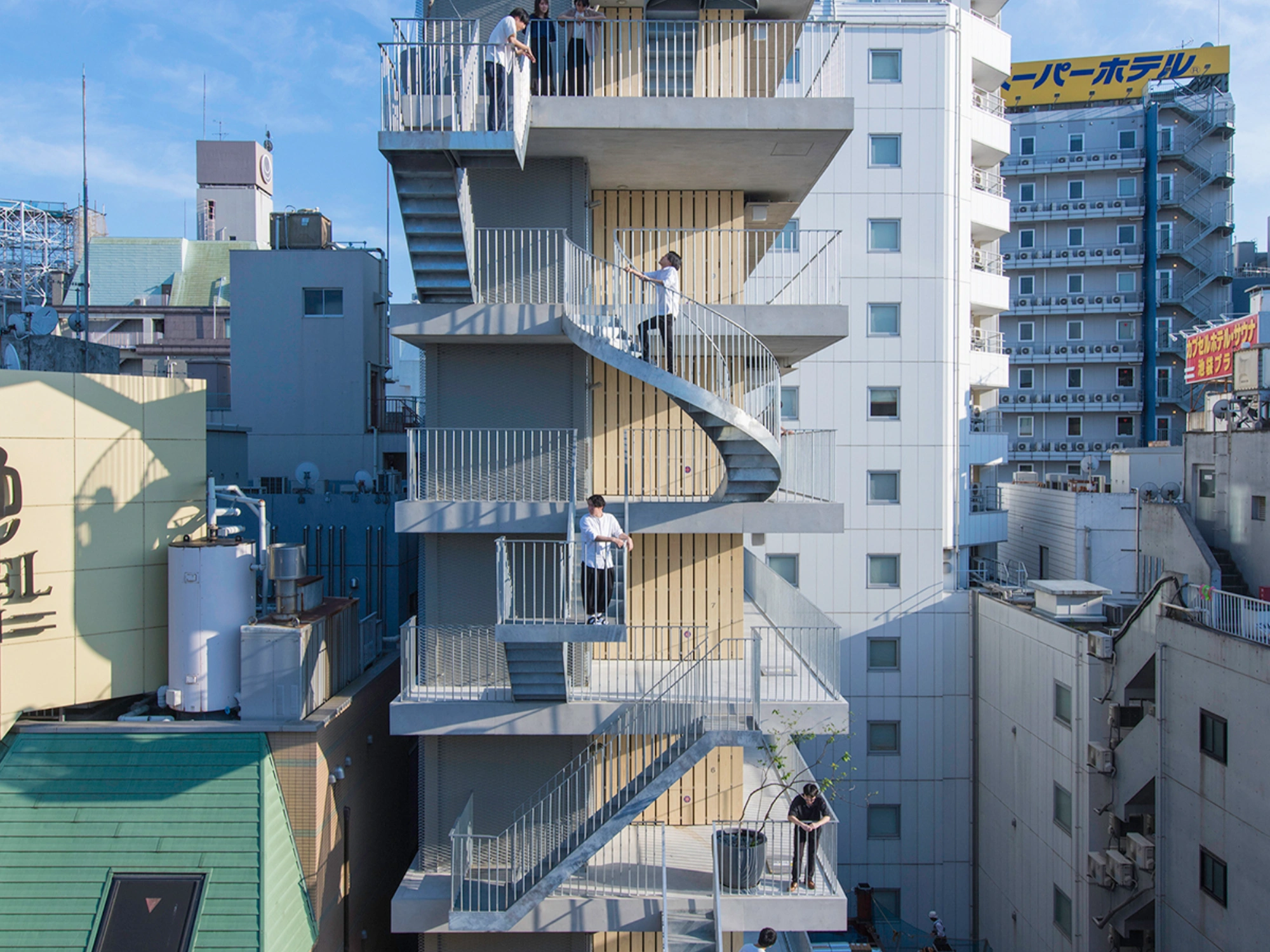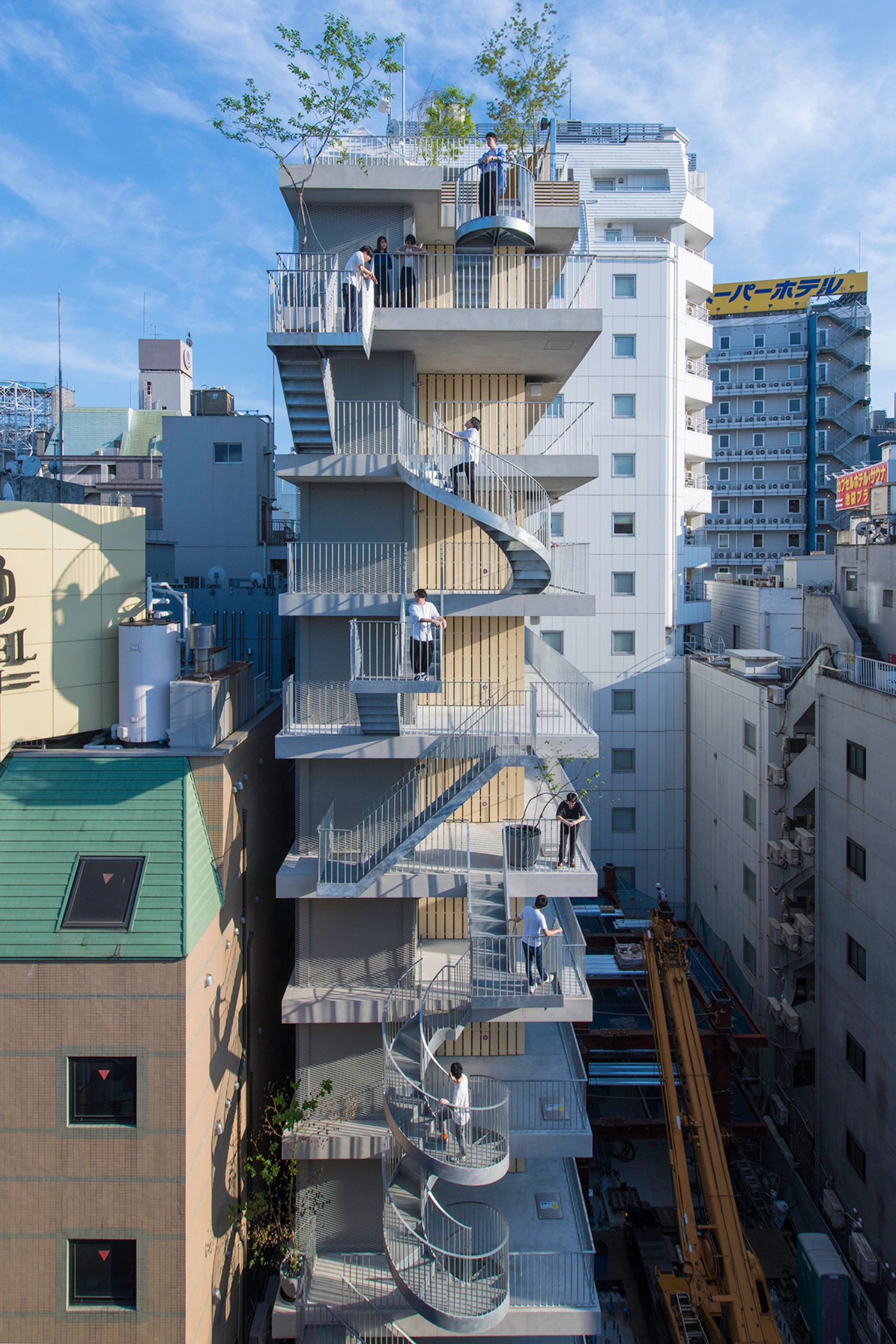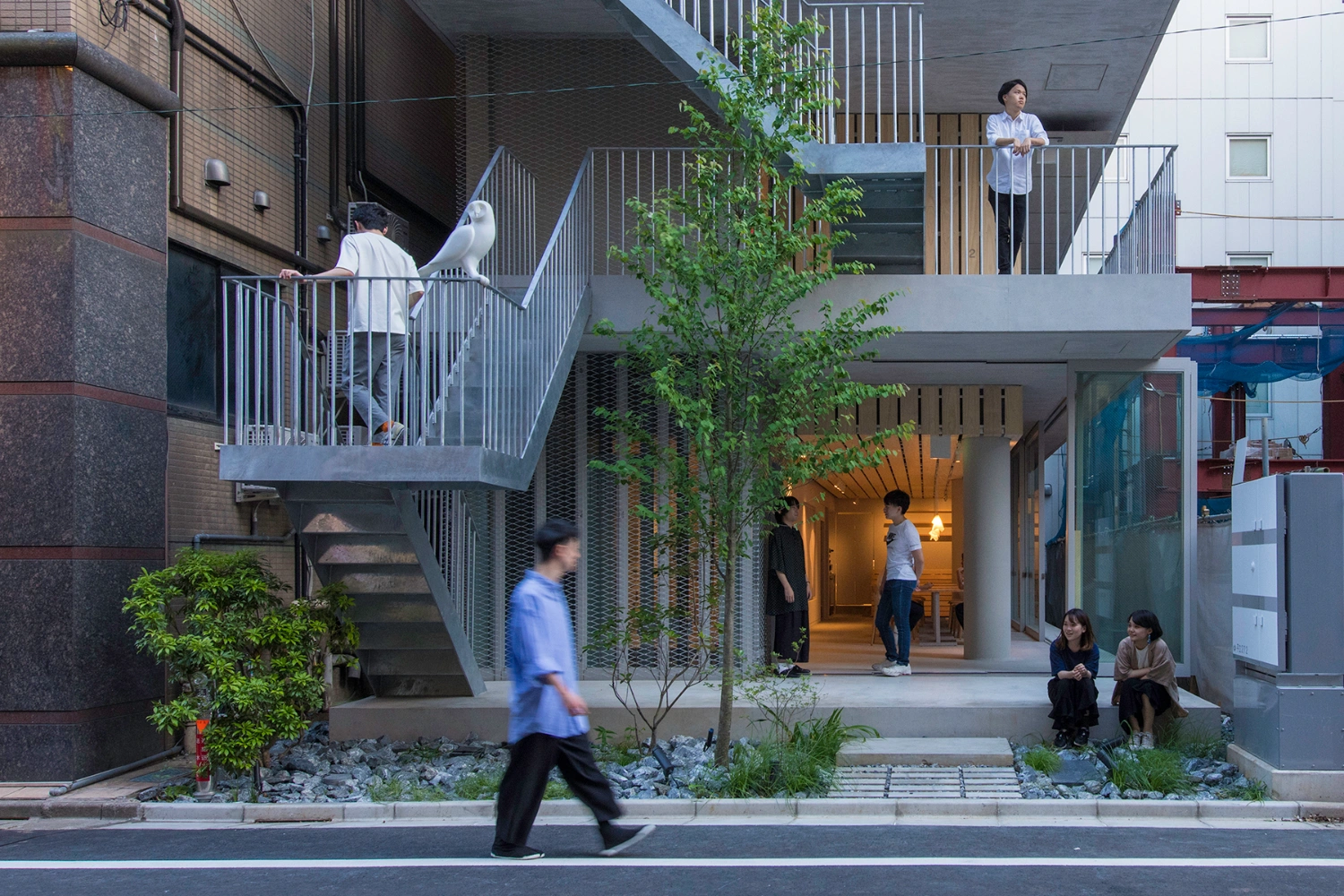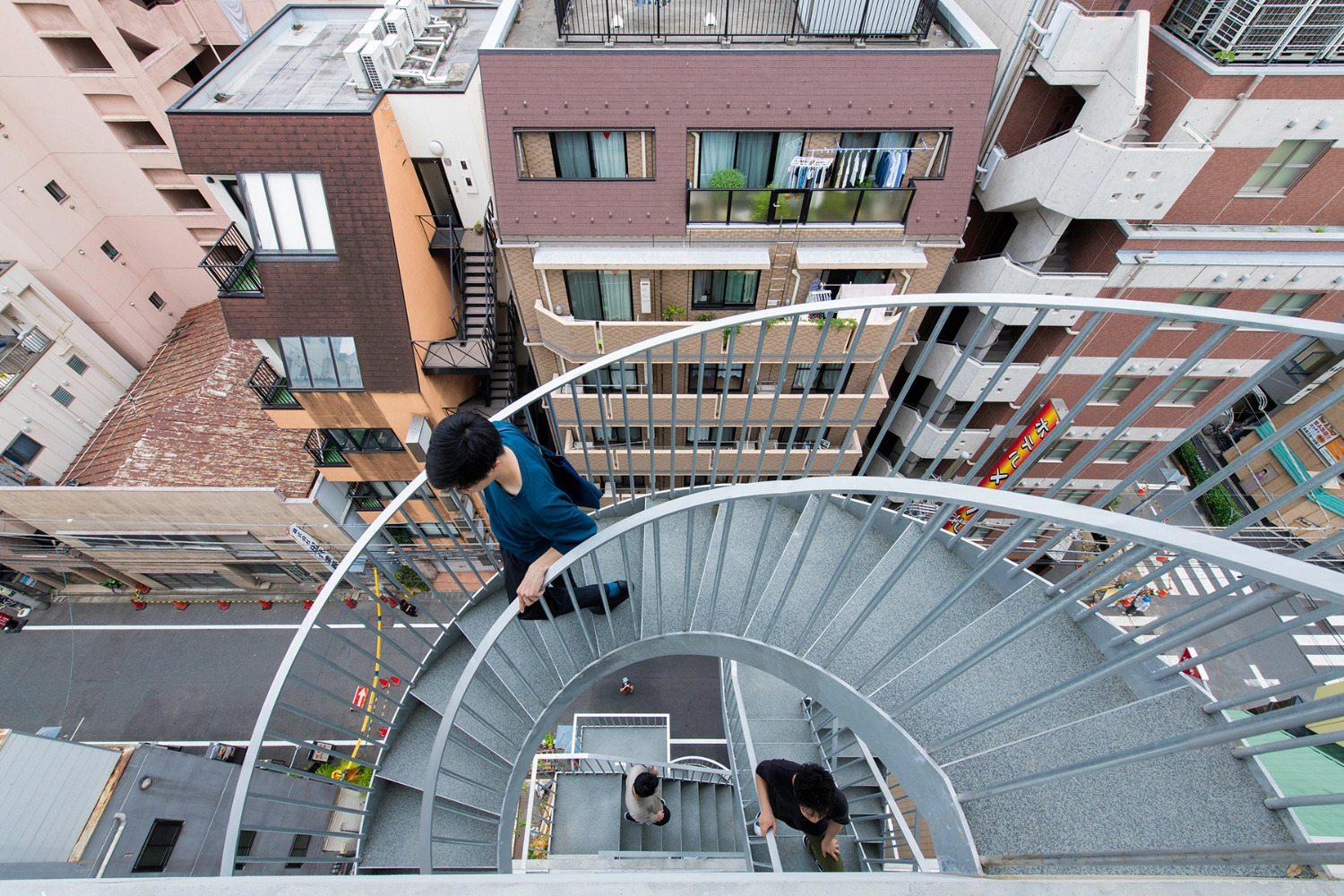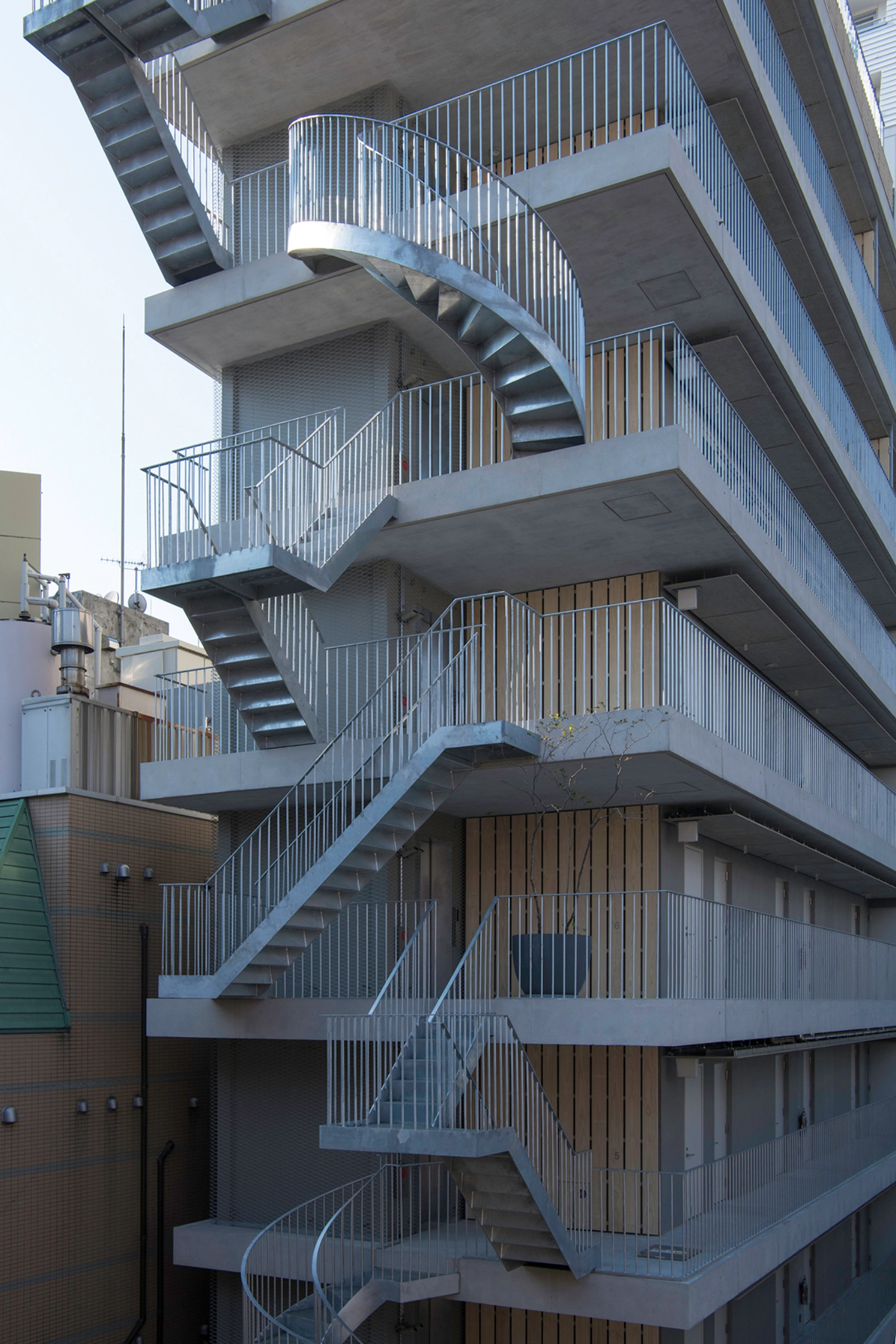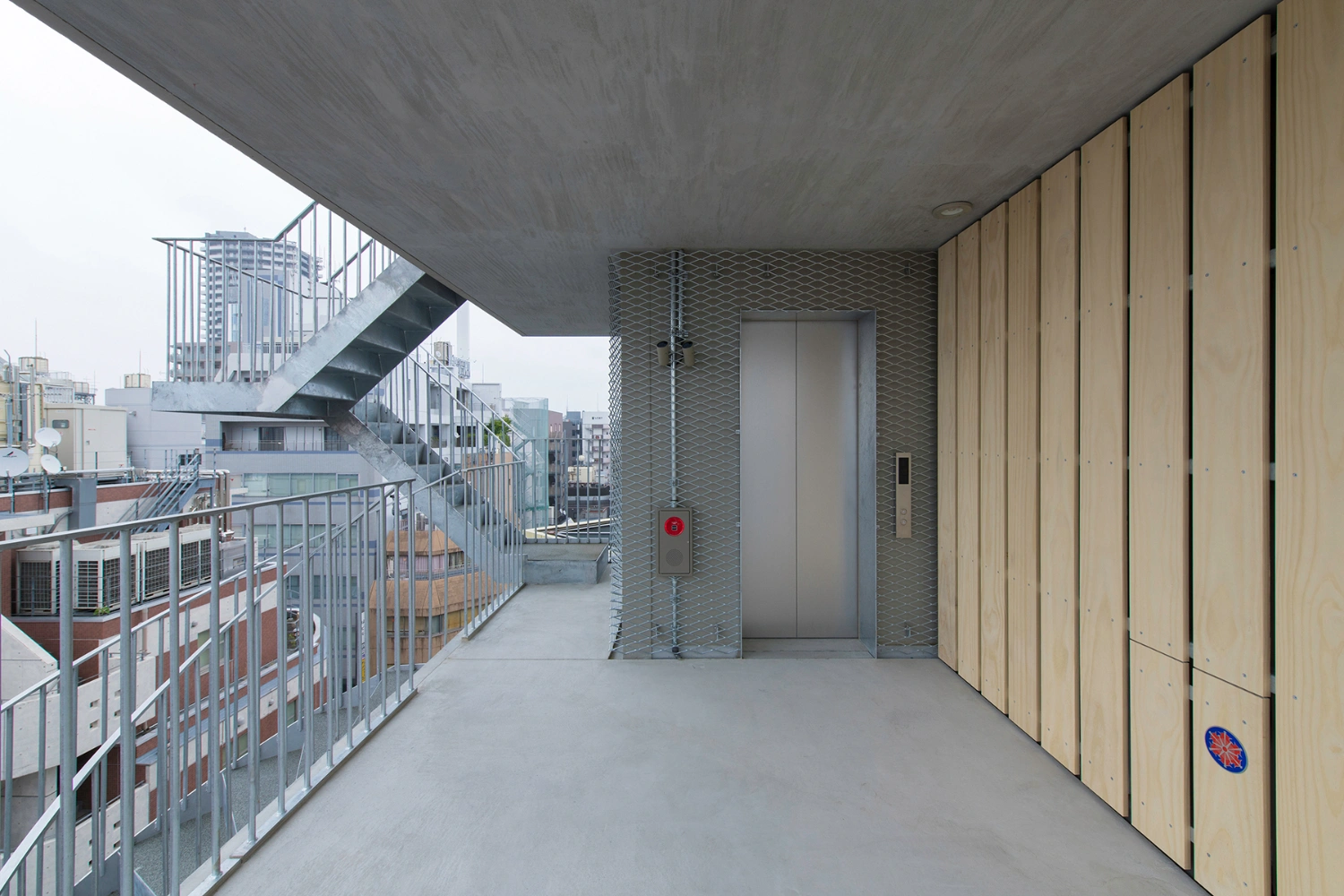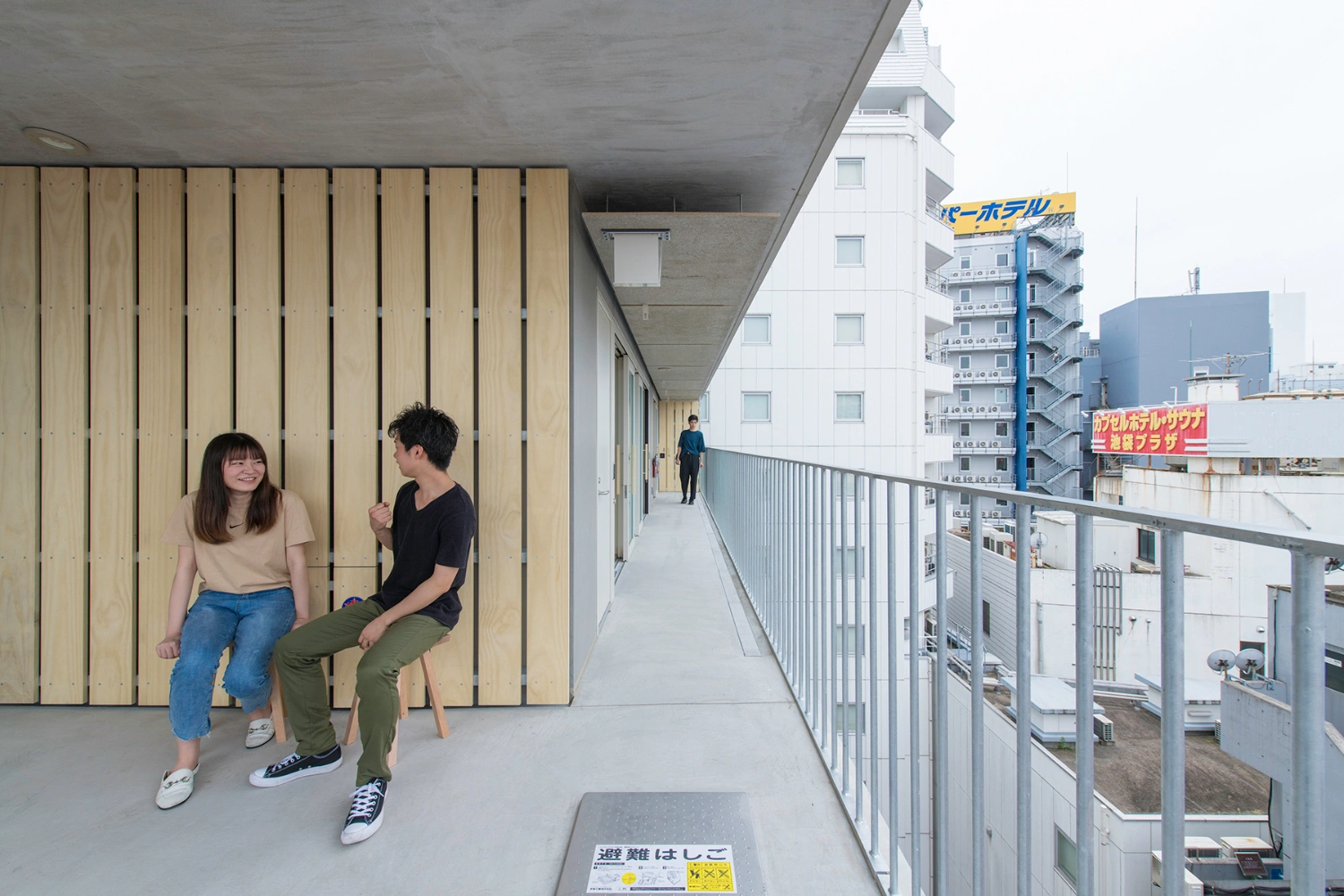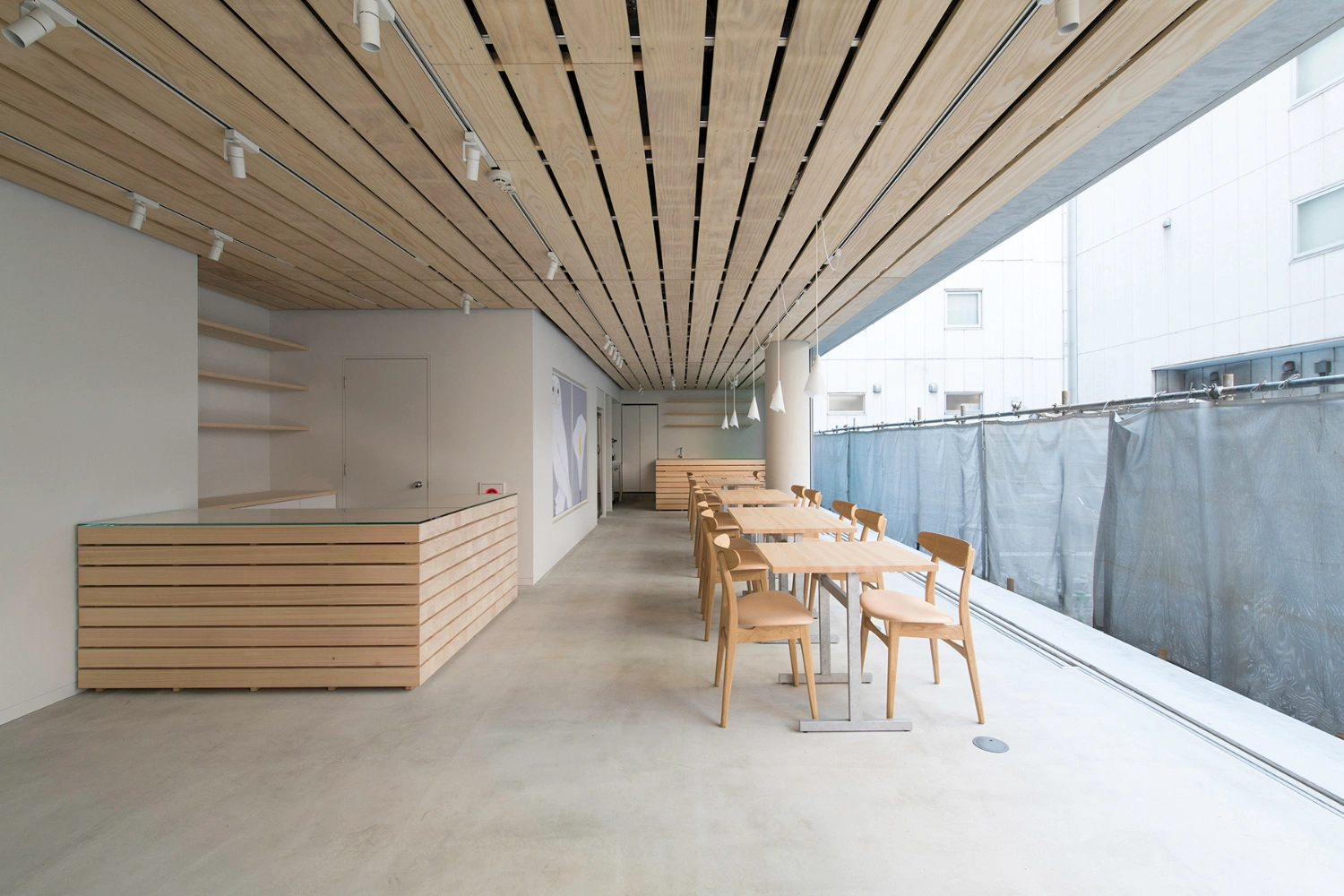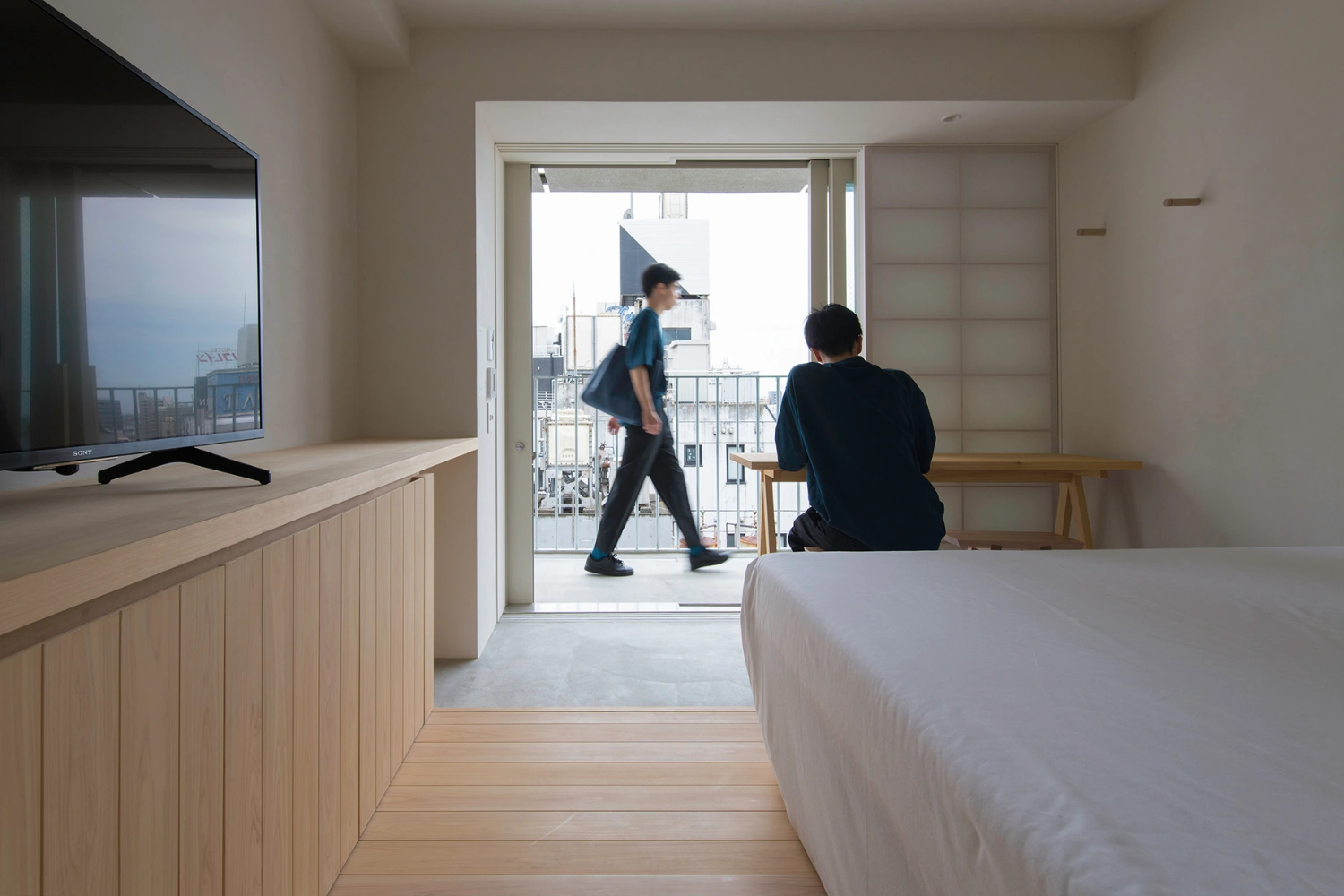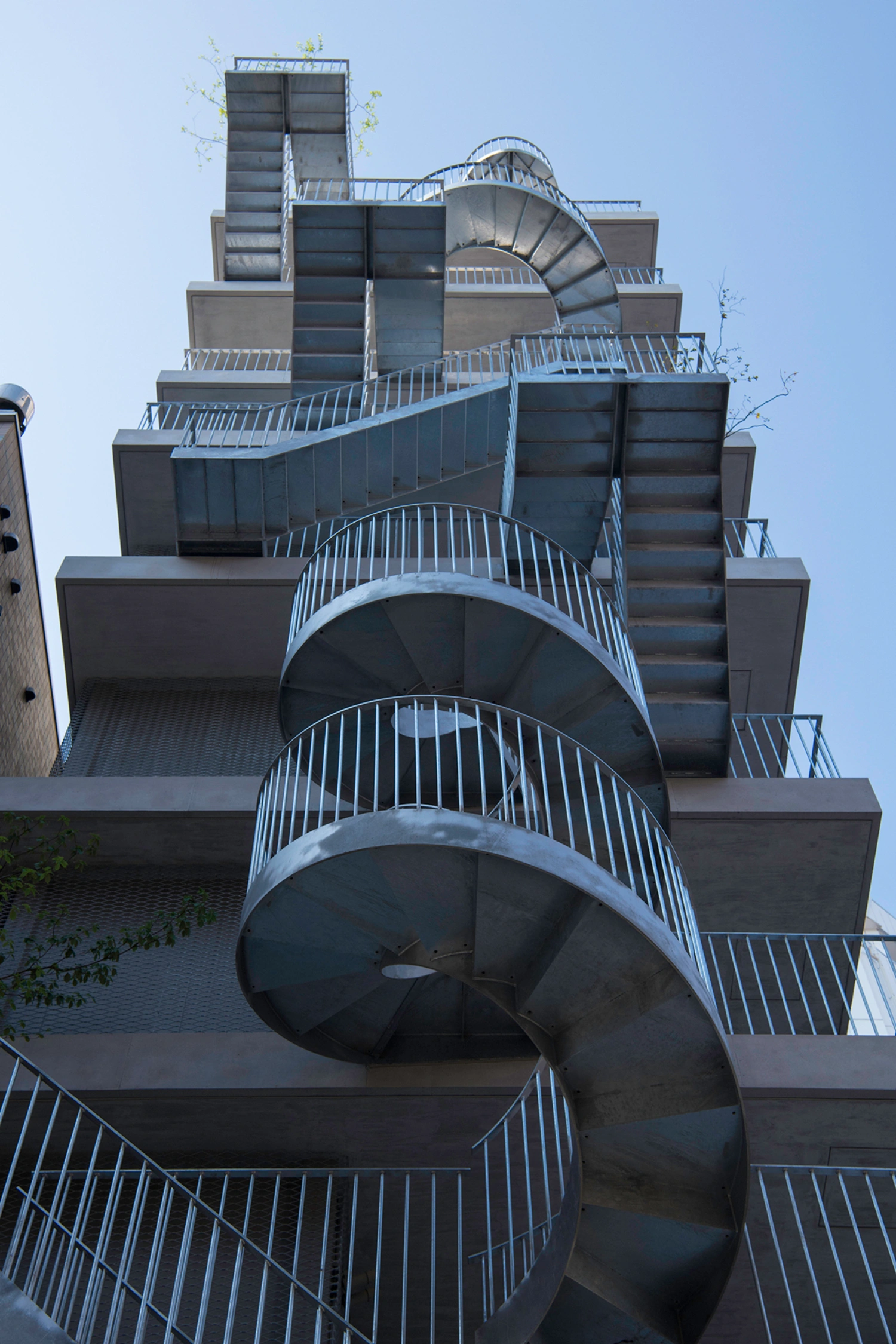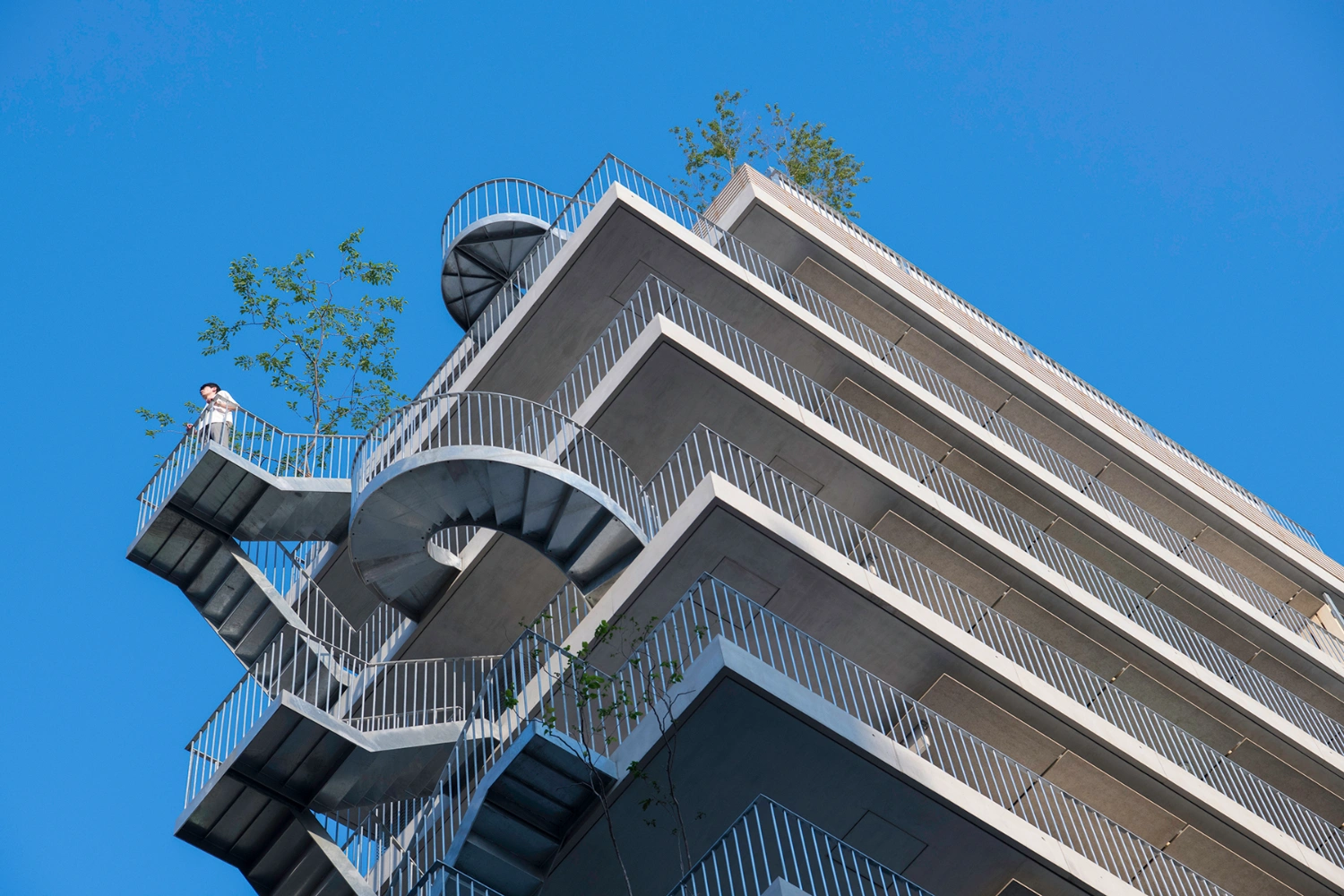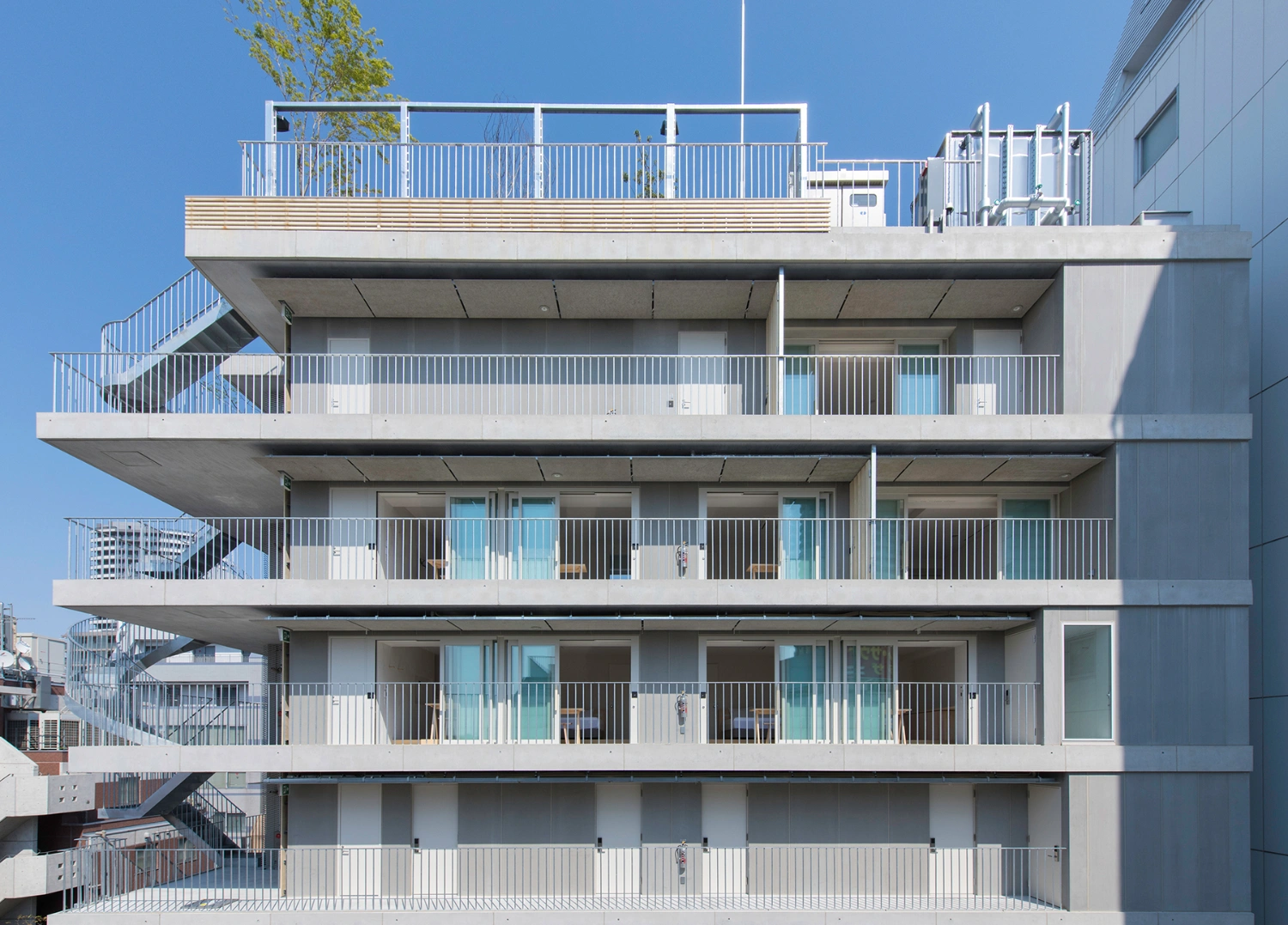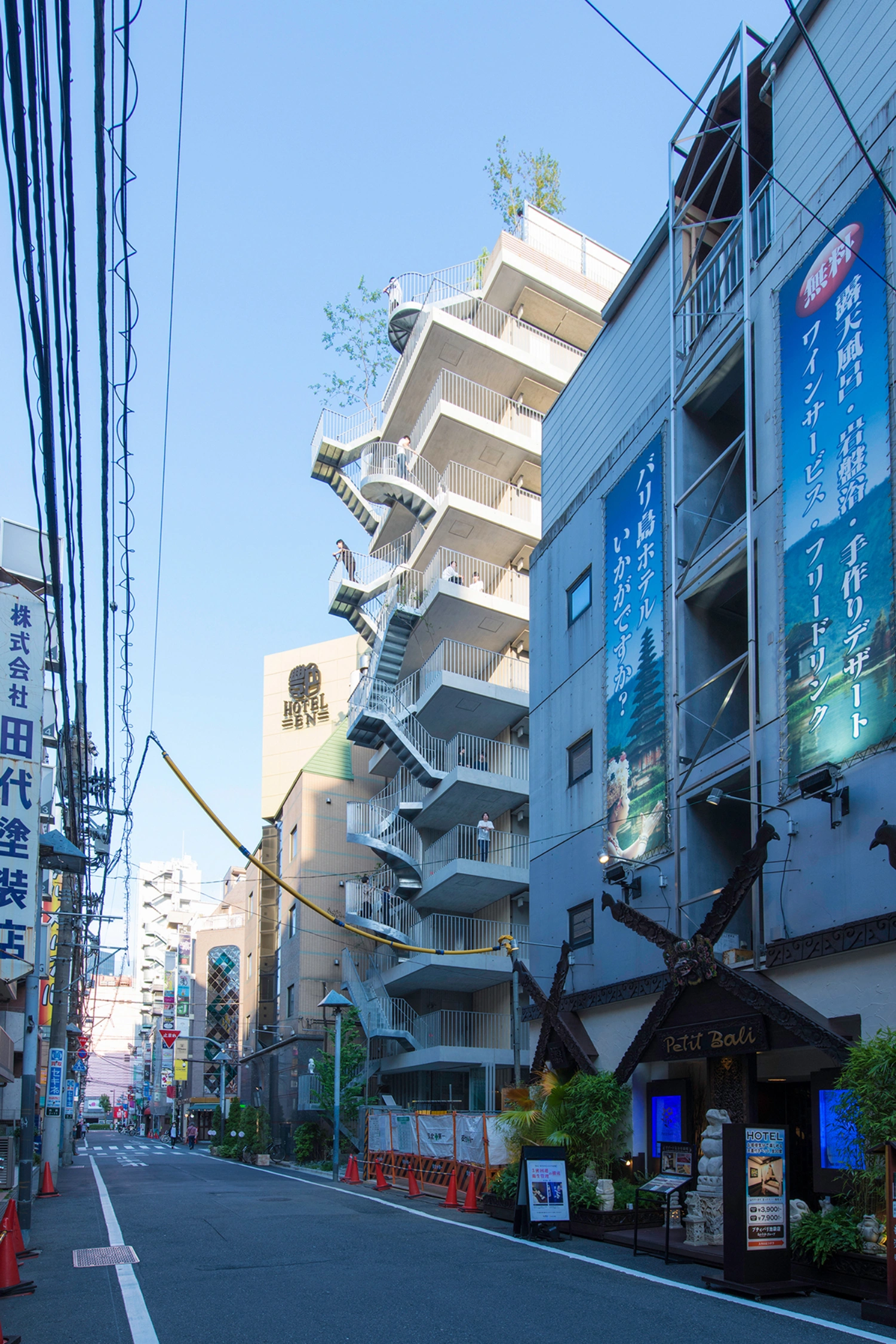Hotel Siro in Tokyo by Mount Fuji Architects transforms the hotel stay into an urban experience, merging traditional Japanese spatial ideas with the immediacy and rhythm of city life.
Completed in 2020 in Ikebukuro, the project dismantles the conventional hotel typology—those hermetically sealed boxes that sever guests from their surroundings—and instead offers an architecture that breathes with the city. Here, the journey from street to room is not a process of withdrawal but of deepening immersion. The architects frame the act of arrival not as a threshold between public and private, but as a continuous negotiation between the two.
Every floor of Hotel Siro is linked to Tokyo’s urban fabric by open stairways, each distinct in design and atmosphere. These vertical connectors evoke the informal topographies of Nagasaki and Onomichi, where stairs form both infrastructure and social stage. The result is an architecture that is not merely functional but narrative—each ascent through the building is an encounter with the rhythms and textures of the city.
The hallways, conceived as semi-exterior loggias, channel breezes and ambient sounds through the structure. They operate as contemporary interpretations of the roji, the narrow alleys that define Tokyo’s older neighborhoods. From these open-air corridors, each guest enters their room through a doma—a small, transitional space traditionally found in Japanese homes—and an engawa-like terrace. This layering of thresholds blurs boundaries between inside and outside, private and communal, contemporary and traditional.
Within the rooms, sliding shoji screens frame shifting views of the Ikebukuro skyline. By opening these partitions, the guest becomes part of the city’s panorama, no longer observing from isolation but participating in its pulse. Mount Fuji Architects’ design allows for a form of urban intimacy—staying at Hotel Siro is less about retreat and more about dwelling within Tokyo’s restless body.
Hotel Siro proposes a new kind of hospitality: one that situates the traveler as a temporary citizen, a “wandering bird” perched within the architecture of the metropolis. It is a hotel that invites rest without withdrawal, proximity without enclosure—a place where the city itself becomes the host.

